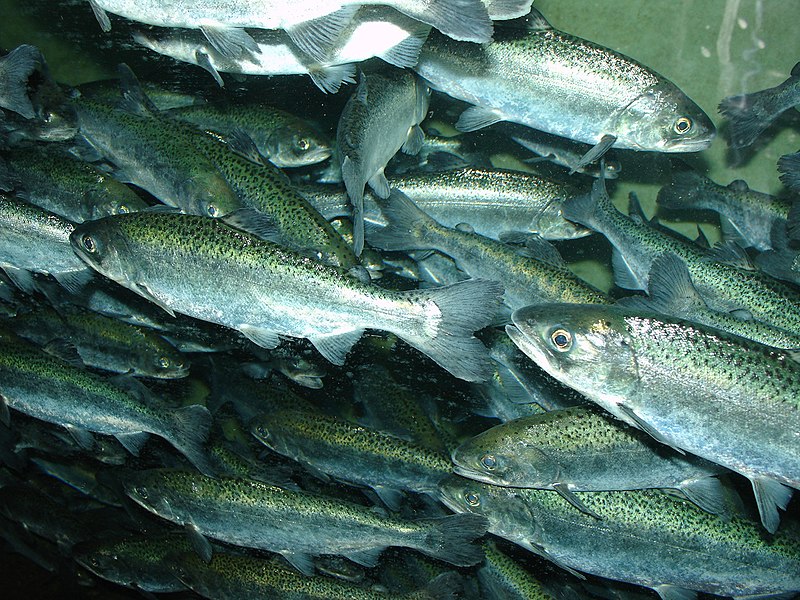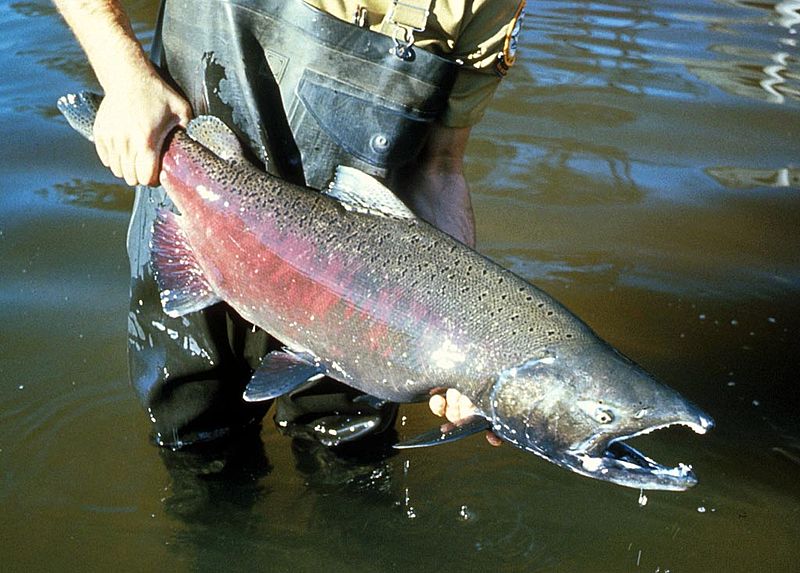 |
| Photo courtesy of Zureks |
Most people know the stories of salmon: how they navigate up the freshwater rivers to lay their eggs. But many people don't realize the entire tale of the salmon life history. Most salmon, but not all, are migratory. The type of migration these salmon display is termed "anadromous".1 Basically, a salmon is born in freshwater; they migrate to saltwater where they grow; and then they migrate back to freshwater to breed. 1 Chinook salmon are born and stay in freshwater systems for 12 to 18 months before they head to saltier waters.1 Chinook salmon, like a number of fish species, find that an estuary, which is a place where freshwater and ocean water mixes, provides a safe harbor for them as they grow for another period of several months. 1 After this, the Chinook salmon takes to the true ocean. They live there for a period between 1-8 years, feeding on things such as plankton, starfish, seaweed, copepods, jellyfish, and other fish species. 1
 |
| Male spawning Chinook salmon Photo courtesy of U.S. Geological Survey |
When it is time for Chinook salmon to breed they head for the rivers. There, they endure a long migration, full of barricades, jumps, predators, and the constant pushing from the river as they swim against the current. These salmon make some of the longest freshwater river migrations of any salmon species to boot. 2 And what happens at the end of such an arduous marathon? Spawning of a new generation, and death for the adults after having used every ounce of energy they had to get to this destination.
The Chinook salmon is unfortunately endangered due to overfishing and habitat destruction from pollution and dams. 2
To read more about this incredible fish, please click the link below.
http://en.wikipedia.org/wiki/Chinook_salmon
http://en.wikipedia.org/wiki/Salmon
No comments:
Post a Comment